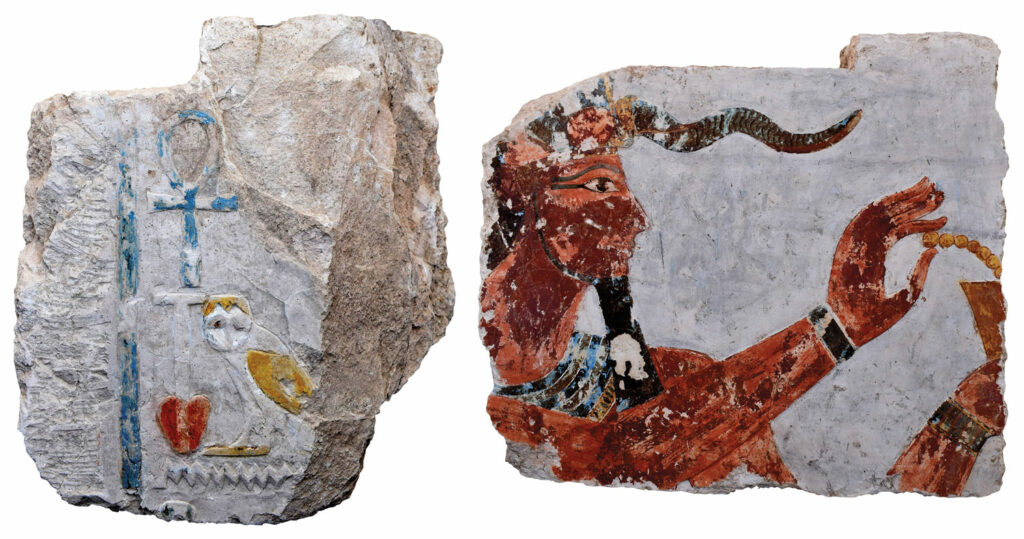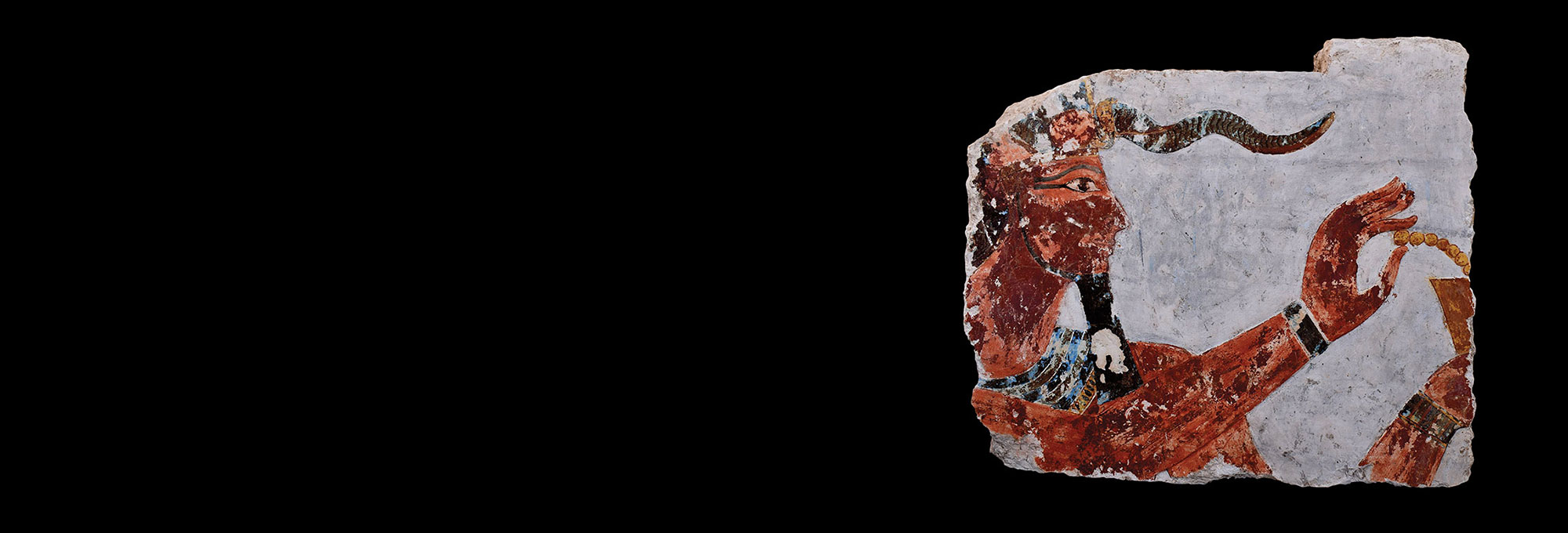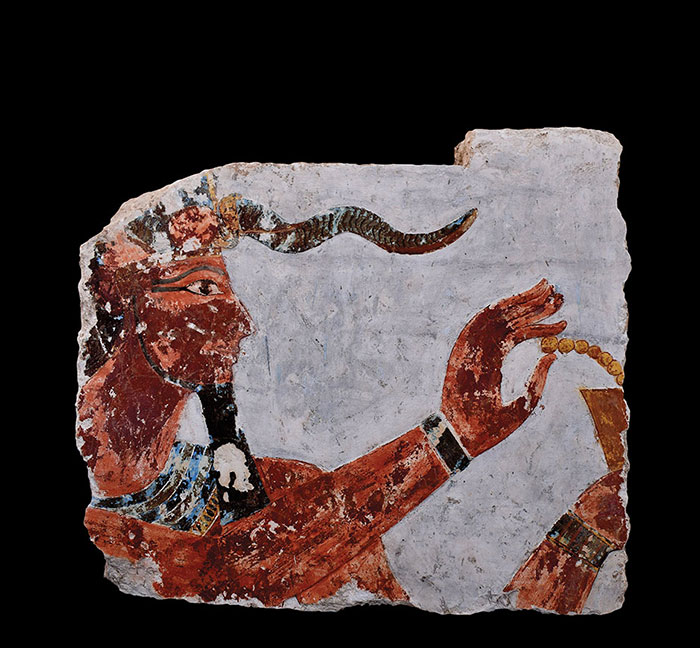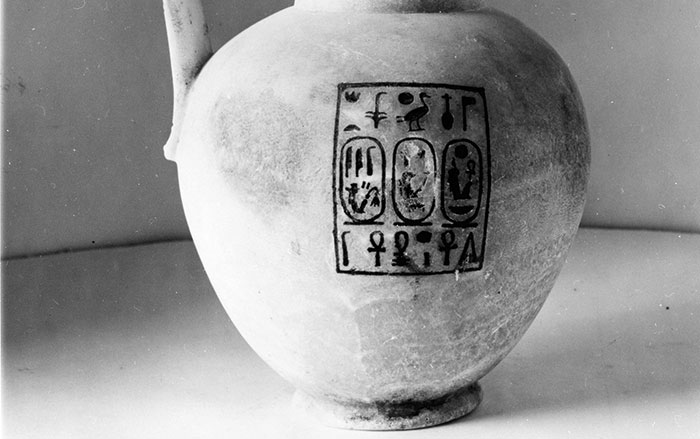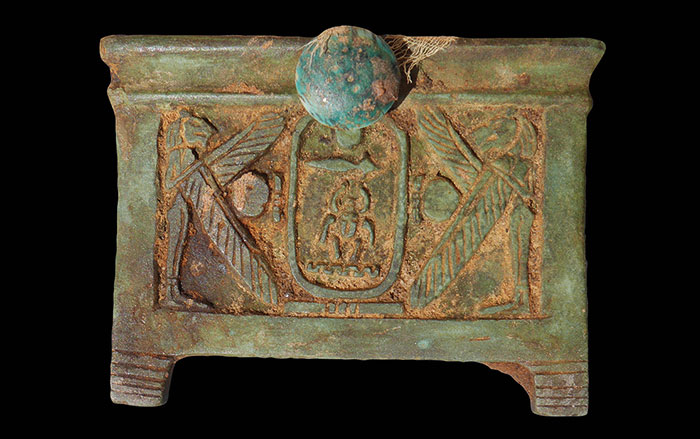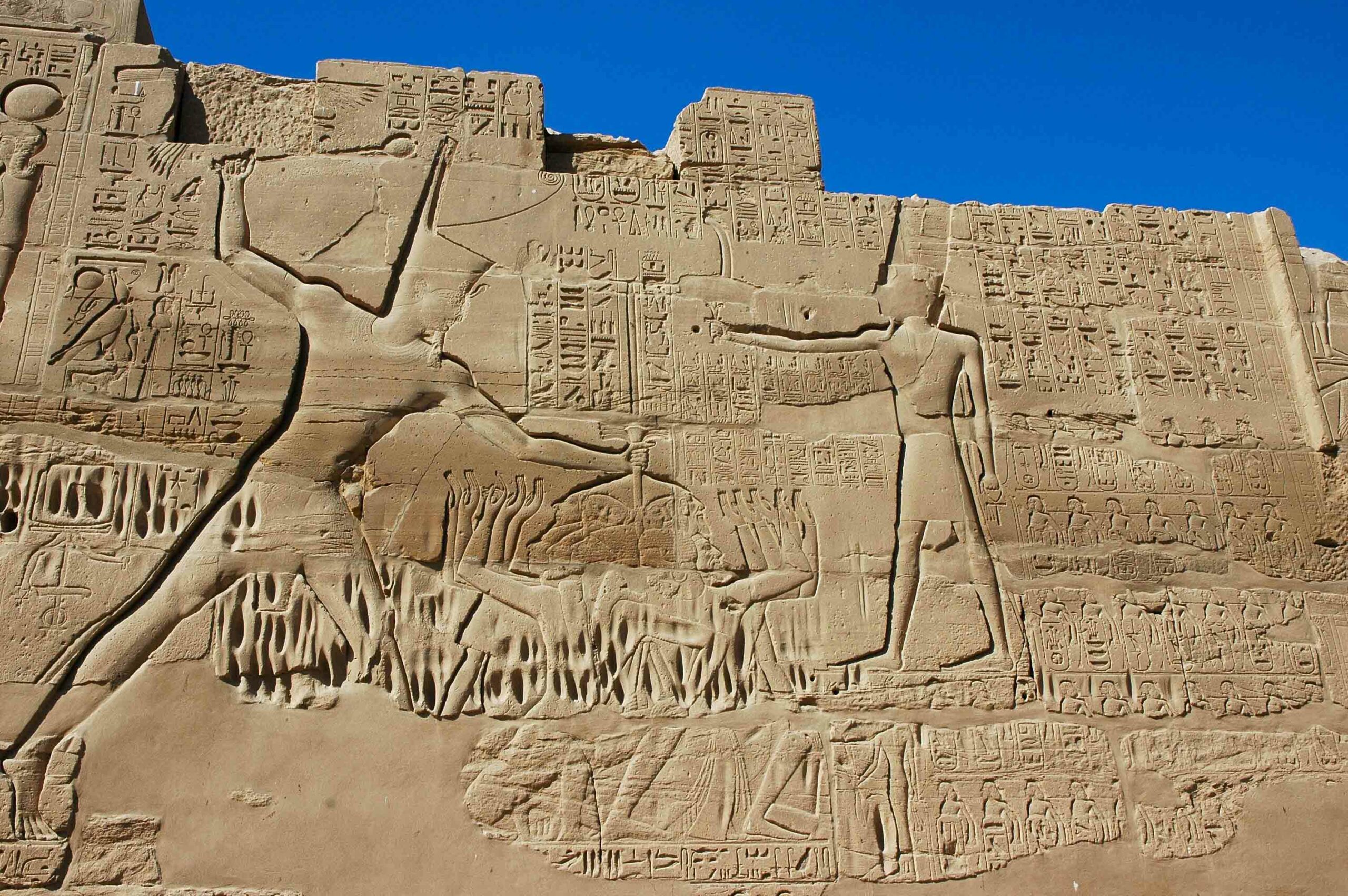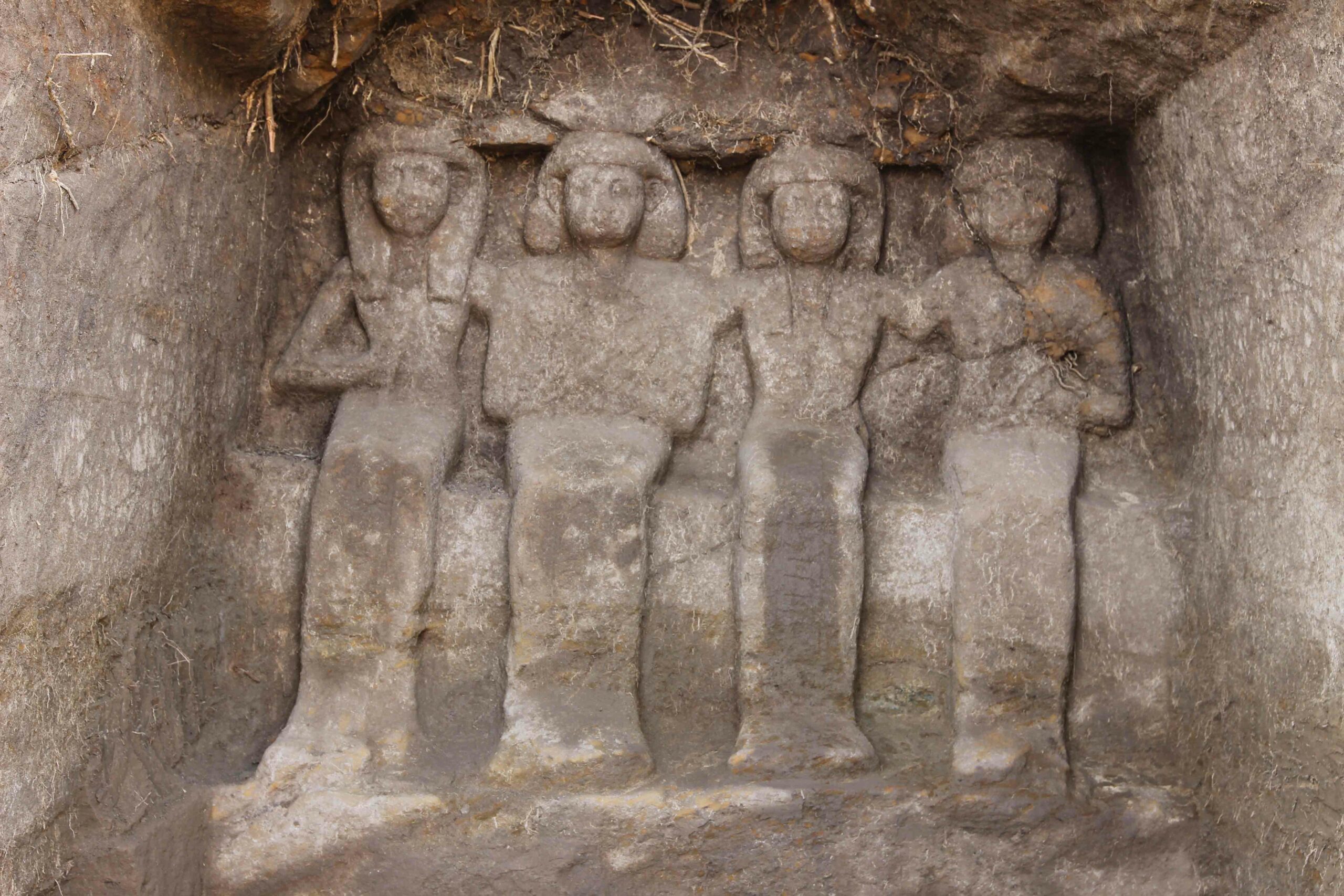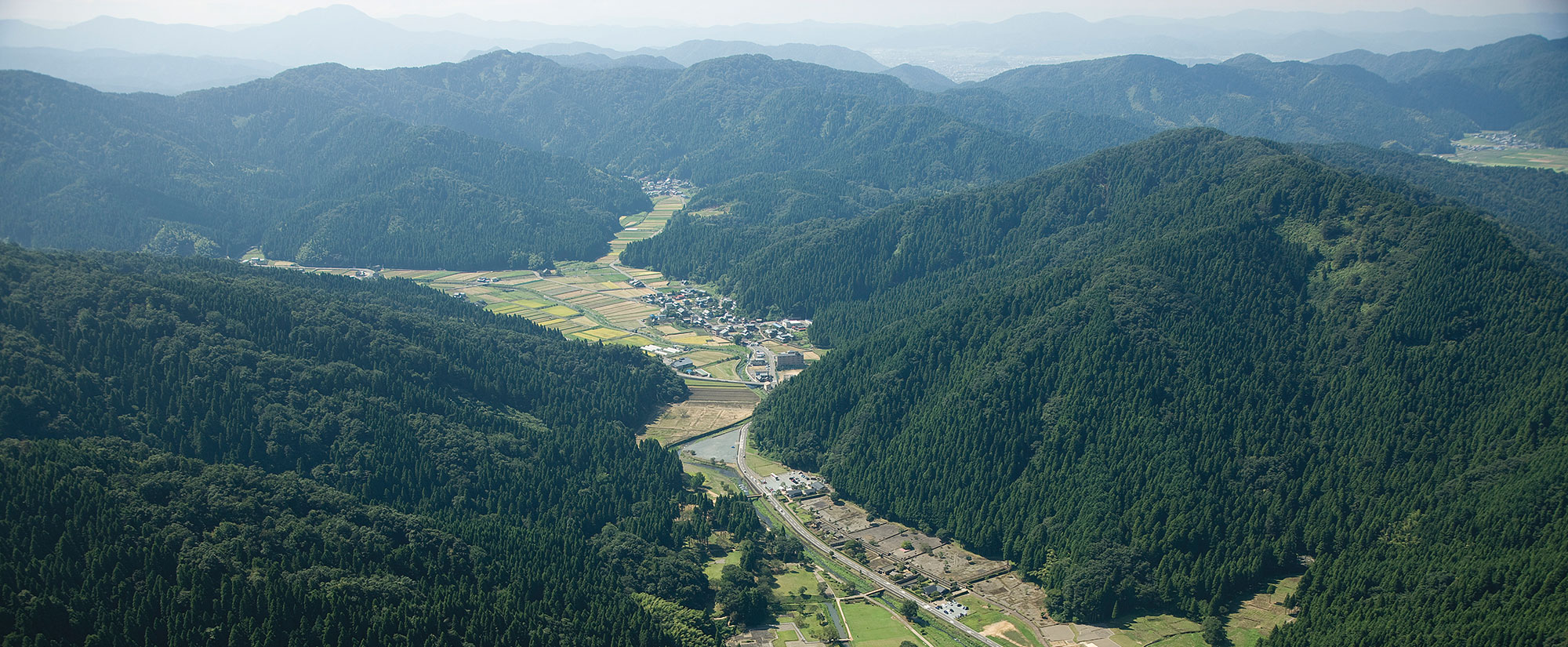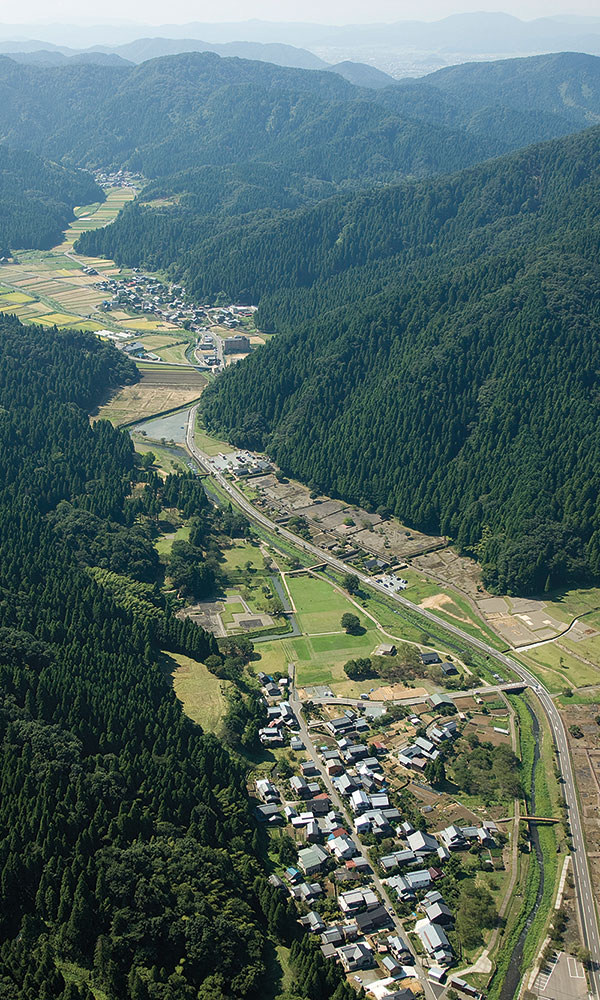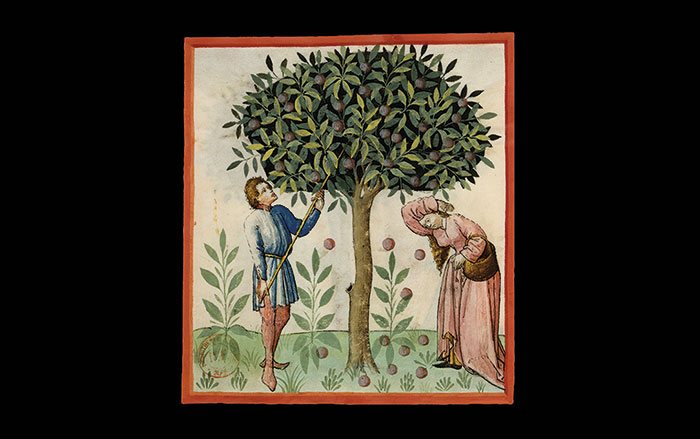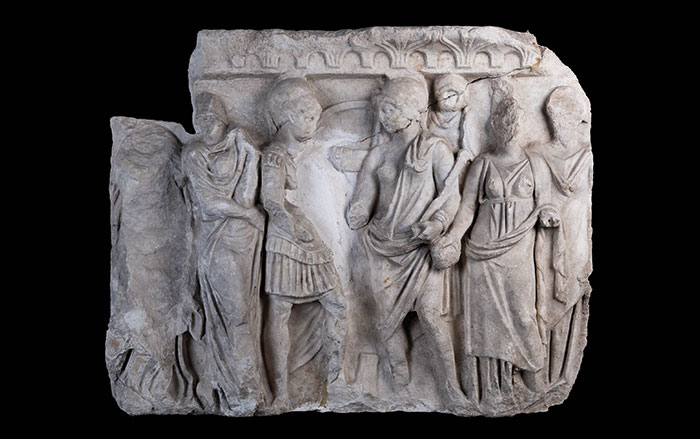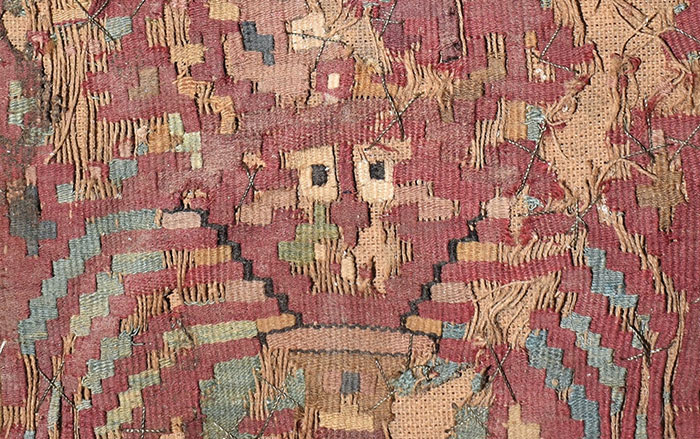
Extensive remnants of one of the temples commissioned by the female pharaoh Hatshepsut (reigned ca. 1473–1458 b.c.) have been discovered in the town of Deir el-Bahari on the west bank of the Nile. The newly unearthed ruins include 1,500 decorated stone blocks featuring bas-reliefs and inscriptions. Among the artifacts are more than 100 limestone and quartzite tablets engraved with Hatshepsut’s royal cartouches showing both her birth name and throne name.
Amid the temple’s wreckage, the team found blocks containing cartouches of the pharaoh Thutmose III (reigned ca. 1479–1425 b.c.), including versions known to have been used after Hatshepsut died. According to Egyptologist Zahi Hawass, who led the excavations, this counters the widely accepted story of how Hatshepsut met her demise. “It’s written in history that Thutmose III killed Hatshepsut and destroyed her monuments,” he says. “But our discovery proves that he maintained the cult of the queen in this temple after her death.” Hawass believes the temple was demolished later, during the 19th or 20th Dynasty (ca. 1295–1070 b.c.), by officials bent on effacing the memory of Egypt’s most powerful female ruler.
